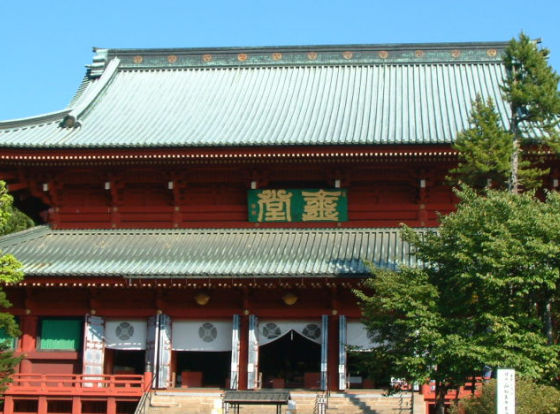Nikko one day
Nikko, located 2 hours train ride north of Tokyo, has been listed as UNESCO World Heritage since 1999. The hearts of this area are Nikko Toshogu shrine, Futarasan shrine and Rinnoji temple. Toshogu was built about 400 years ago enshrining Tokugawa Ieyasu, the founder of Edo Shogunate, and famous for its elaborately contructed gate and archtectures with cavings of “three monkeys” and “sleeping cat”.
Futarasan shrine and Rinnoji temple that were established in 8 – 9 century, are located near Toshogu shrine. The Nikko area used to be one of the center of Japanese mountain asceticism-shamanism incorporating Shinto and Buddhist concepts, and is surrounded by deep nature. You can enjoy the beauty of harmony between nature and man-made beauty here.
From Toshogu area, you can go upto Lake Chuzenji, the highest located lake in Japan at 1269 m above sea level, driving through “iroha drive way,” 48 hair-pin curved drive way. Kegon waterfall, falling from Lake Chizenji and 97 m height, is one of the three great waterfall in Japan.
Yuba, the cuisine made of soybean milk, is very famous and good for your lunch.

Places of interests
– Toshogu shrine
– Futarasan shrine
– Shinkyo bridge
– Rinnoji temple
– Rinnoji Taiyuin temple
– Kanmangafuchi Abyss hiking trail
– Nikko Tamozawa Imperial Villa
– Kego waterfall & Lake Chuzenji
Model itineraries
- Model 1 (Enjoy Nikko world heritage – 9 hrs)
- Meet at your hotel or major train station)
- Train from Asakusa (Tokyo) to Nikko (2 hrs)
- Rinnoji & Taiyuin temples
- Lunch
- Toshogu & Futasasan shrine
- Shinkyo bridge
- Train back to Tokyo
- Model 2 (Explore Nikko and Kegon water fall – 11 hrs)
- Meet at your hotel or major train station)
- Train from Asakusa (Tokyo) to Nikko (2 hrs)
- Bus to Lake Chuzenji (1 hr)
- Explore Lake Chuzenji & Kegon waterfall
- Lunch
- Bus to Toshogu area (1hr)
- Explore Toshogu shrine & Rinnoji temple
- Train back to Tokyo
Pricing
- Tour fee
- Uptp 8 Hrs
- 1 or 2 persons : 30,000 JPY
- Group upto 5 persons : 40,000 JPY
- More than 8 Hrs
- 1 or 2 persons : 35,000 JPY
- Group upto 5 persons : 45,000 JPY
- For more than 5 persons, please contact me
- Uptp 8 Hrs
- Included
- Guide fee
- Public transportation fares for guide
- Not included
- Transportation fares for guests
- around 6,000 JPY per person round trip from Tokyo to Nikko
In case of JR pass, the cost from Tokyo to Nikko is included - Local bus costs around 3,000 JPY for return, in case of going to Chuzenji waterfall
- around 6,000 JPY per person round trip from Tokyo to Nikko
- Admission fees for guests and guide
- Toshogu : 1,300 JPY, Rinnoji : 900 JPY, Shinkyo bridge : 300 JPY, Kegon waterfall : 550 JPY
- Lunch for guests and guide
- Transportation fares for guests
What you can expect during the tour

Toshogu shrine
The shrine is dedicated to Tokugawa Ieyasu, the founder of Tokugawa shogunate and Edo city, present-day Tokyo in 1603, and built in 1617, and rebuilt to be a splendid shrine in 1636 by Tokugawa Iemitsu,3rd shogun. Many structures demonstrate the syncretism of Shinto and Buddhism. Youmeimon gate, gorgeous gate, and caving od three monkeys are very famous.

Futarasan shrine
Shrine is originated in 8th century, enshrined Mt. Futarasan (Mt. Nantaisan), and guardian god of Nikko area. This shrine is also a part of world cultural heritage.

Shinkyo bridge
Namely, god bridge. The main gate bridge of Futarasan shrine. It is lacquered vermillion.

Rinnoji temple (Sanbutudo)
Established in 8th century, and the center of Nikko mountain asceticism-shamanism incorporating Shinto and Buddhist concepts. The main hall, Sanbutudo, is one of the biggest wooden building Kanto area and constructed as a style of esoteric Buddhism of Tendai-sect by Tokugawa Iemitsu in 1645. Buddha triad with the height of 7.5 m are very famous.

Rinnoji Taiyuin temple
Taiyuin is a part of Rinnoji, and the mausoleum of 3rd shogun, Tokugawa Iemitsu, with 22 national treasures listed as world cultural heritage. Although the buildings were colored black & gold and not so colorful, following Iemitsu’s will of not surpassing his ground father, Ieyasu, they are still gougeous with “Gongenzukuri” style.

Kanmangafuchi Abyss hiking trail
The beautiful scenery generated by the lava of Mt. Nantaisan. 70 of Jizo bodhisattva statues are called “bake-jizo”, the numbers of statues differs each time of counting. The small valley of Daiya river is very beautiful.

Kegon waterfall & Lake Chuzenji
Lake Chuzenji, a dammed lake born by Mt. Nantaisan volcanic eruption, used to be a place of asceticism by Buddhist monks. After Meiji era, the area was developed as a summer resort area, and many foreign diplomats built their summer houses.
Kegon waterfall, the sole water outlet from Lake Chuzenji, has 97 m height and is one of three great waterfalls in Japan. Visitors can go down to the vista point near the waterfall basin by elevator.
